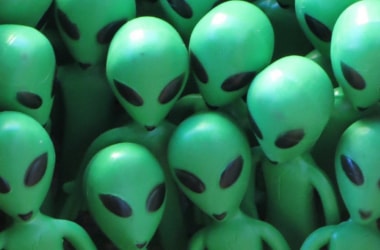
A mission to explore intelligent alien life in the universe has recorded some mysterious signals coming from a galaxy three billion light years away, according to an Indian-origin scientist working on the ambitious project co-founded by Stephen Hawking.
The team working under the Breakthrough Listen project - set up by Hawking, one of the world’s best-known scientists, and Russian billionaire Yuri Milner - is set to discover the truth about the universe.
The latest fast radio bursts (FRBs) prove their equipment is working well and ready to pick up signs of life if they exist.
Breakthrough Listen is a USD 100-million global astronomical initiative launched in 2015 by Hawking and Miller and has teams around the world using their telescopes to look for evidence of life.
The initial 10-year programme will survey the 1,000,000 closest stars to Earth, scanning the entire galactic plane of the Milky Way.
Beyond our galaxy it will listen for messages from the 100 closest galaxies at 10 billion different frequencies.
Announcing the project at the time at a press conference in London, Hawking said it was time to commit to finding the answer to life beyond Earth.
Explanations for the latest signals detected range from rotating neutron stars with extremely magnetic fields, to energy sources used by extraterrestrial civilisations to power spacecraft.
Whatever they are they left their galaxy when our Solar System was just two billion years old and life was just getting going on Earth.
At first scientists thought the signals were the fallout from a catastrophic event in space, like a supernova, but then they repeated again in 2015 and 2016 suggesting the whatever object produced them was still there.
In the fresh experiment, which will be elaborated upon in scientific journals in future, University of California, Berkeley, experts scanned the same galaxy at a higher frequency than which had been used to see the original bursts, and found 15 more.